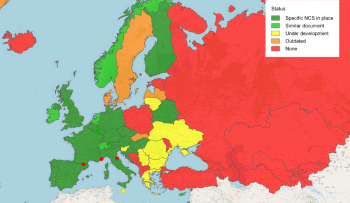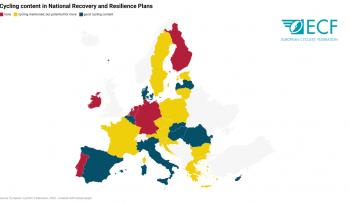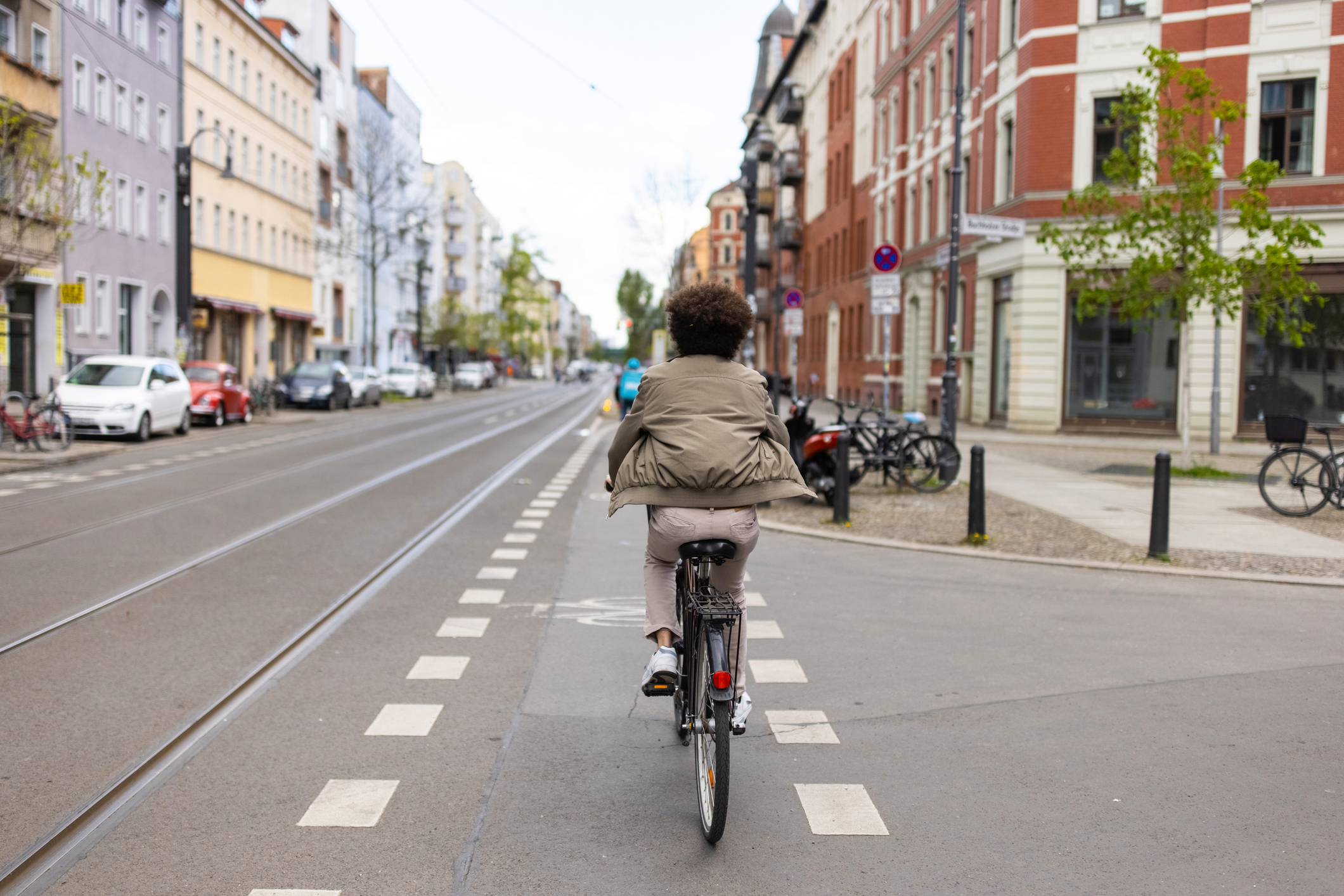
Quality of life in European cities and cycling—what’s the link?
At the end of 2023, the European Commission published a comprehensive survey on how European citizens from 83 cities in the EU and its neighbourhood perceive their quality of life. At ECF, we took a deep dive into the data, analysed the aspects relevant to mobility, and linked them to our own datasets on cycling infrastructure to find possible correlations. Main conclusions: More infrastructure is linked to higher cycling levels, and we need better and more harmonised data collection
The sixth edition of the “Report on the Quality of life in European cities” was published in December 2023. It is based on a survey among more than 70,000 European citizens from 83 cities in the EU, the United Kingdom, Norway, Switzerland, the Western Balkan countries and Türkiye. The report’s thematic scope is very broad and touches many aspects linked to the quality of life in a city, such as housing, earning a living, culture, green spaces, healthcare, quality of public administration and, of course, mobility.
While many mobility-related questions of the survey focus on public transport, there is one question asking for the most used mode of transport on a typical day that includes cycling as an option. Since the survey allows for two answers to this question, it does not provide modal split data in the strict sense. The results are nonetheless relevant for comparing cycle use across the 83 cities.
Overall, 14% of respondents use cycling as (one of) their main mode(s) of transport on a typical day. In the survey, as in many other datasets, men were more likely to mention cycling than women. The results show big disparities in cycle use between European cities: While in the city with the highest cycling levels, Groningen in the Netherlands, 46% of respondents indicated cycling as a main mode of transport, the corresponding figures in the Italian capital, Rome were only 5%. Also, within countries, differences can be huge: In Italy for example, the highest-ranking city of Bologna had a cycling share of 18%, more than three times as high as Rome, whereas in Belgium, results range from 8% in Liège to 28% in Antwerp. Looking outside the EU, only three otherwise very different cities showed higher percentages of bike use compared to the survey cities’ average: Oslo (Norway), Tirana (Albania) and Geneva (Switzerland).
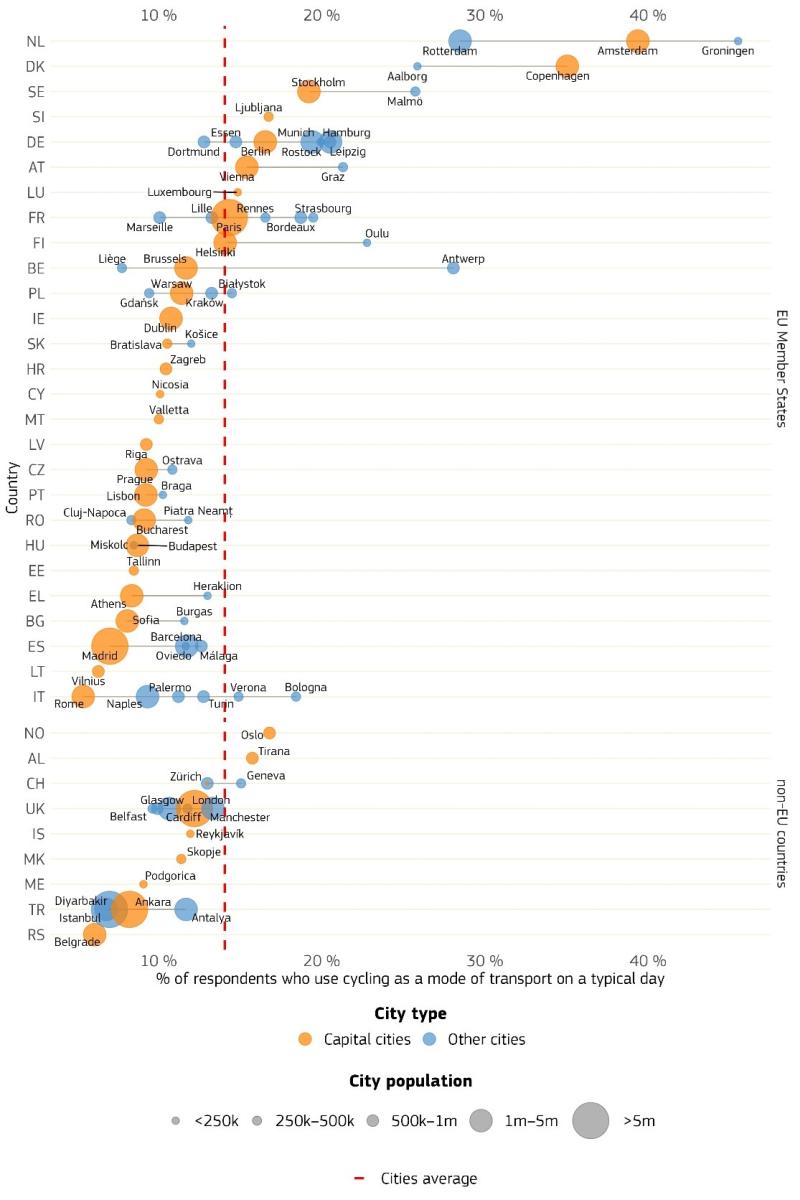
Source: European Commission DG REGIO, Report on the Quality of Life in European Cities 2023
Using the ECF’s own data from the report on our dashboard “Quantifying Europe’s Cycling Infrastructure using OpenStreetMap”, we could establish a clear correlation between the coverage of the main road network with separated infrastructure and cycling usage levels in the cities of the report. Correcting for outliers, for example, cities with a high share of cycling infrastructure away from main roads, in natural areas etc., our analysis shows that almost 60% of the variance in cycling levels between cities could be explained by the differences in coverage with separated cycling infrastructure:
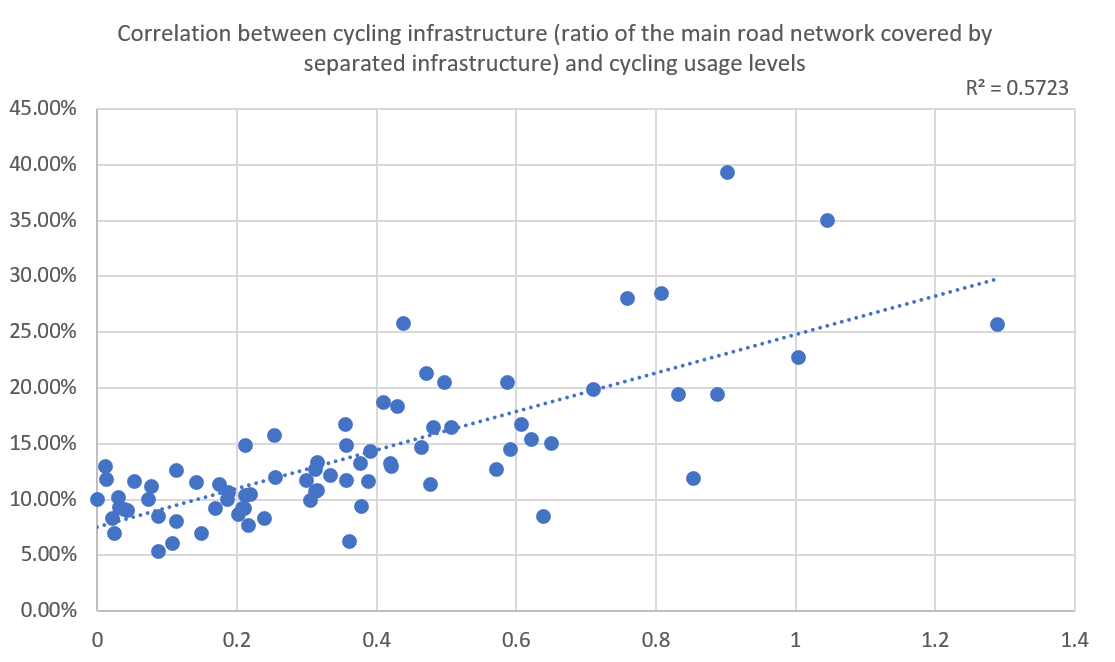
Another relevant correlation appears when crossing the two datasets: Around 40% of the variance between cities in citizens’ satisfaction with public spaces could be explained by the presence of cycling infrastructure, again expressed as the ratio of the length of cycling infrastructure to the length of main roads. While we should be cautious in interpreting this result, especially when it comes to the question of causality, it is nevertheless an interesting finding that would warrant further research.
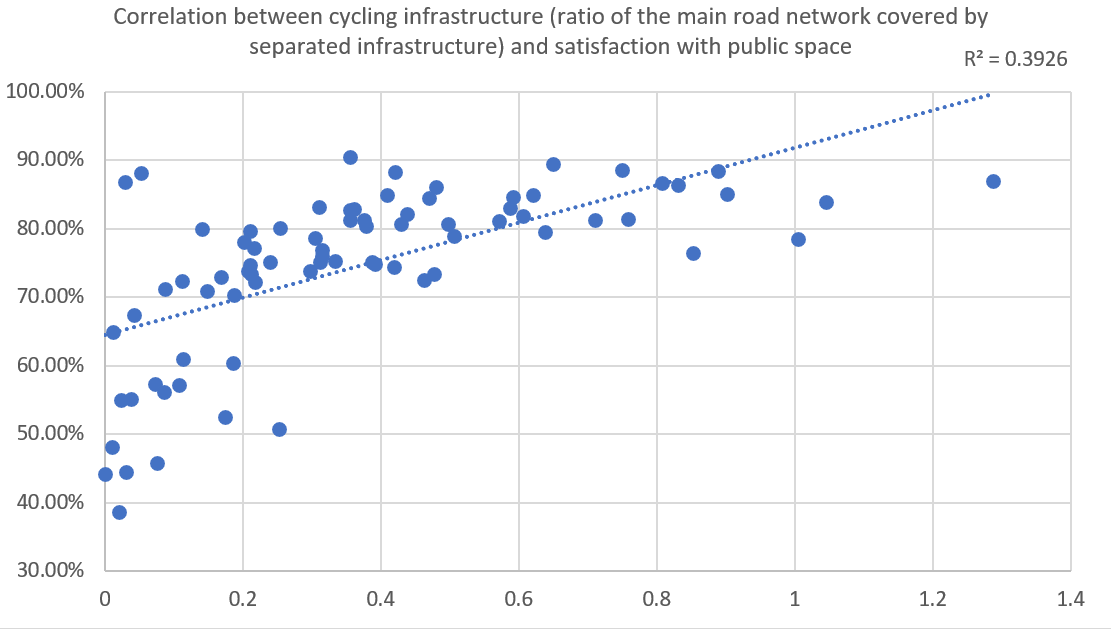
There is one big downside to the survey and its methodology: It is not comparable to other datasets relevant for cycling at the European level. These include the 2022 study on “New Mobility Patterns in European cities”, which, despite its name, has a country-wide scope and is based on a travel survey, but also previous Eurobarometer surveys on mobility, where a similar question on the most used of transport was asked but with only one answer option, meaning that results are not comparable.
In terms of implications for cycling policy, two main points emerge from our analysis of the report:
- The clear relationship between cycling infrastructure and cycling usage levels, once again showing why the commitment to significantly increase safe and coherent cycling infrastructure across Europe in the proposal for a European Cycling Declaration on Cycling is so important and needs to be implemented swiftly;
- The need for better and more harmonised data collection at the European level, which is also addressed in the proposed declaration. We need comparable datasets across countries, across cities, and over time to be able to track the development of cycling in Europe.
Contact the author
Recent news!
Contact Us
Avenue des Arts, 7-8
Postal address: Rue de la Charité, 22
1210 Brussels, Belgium

